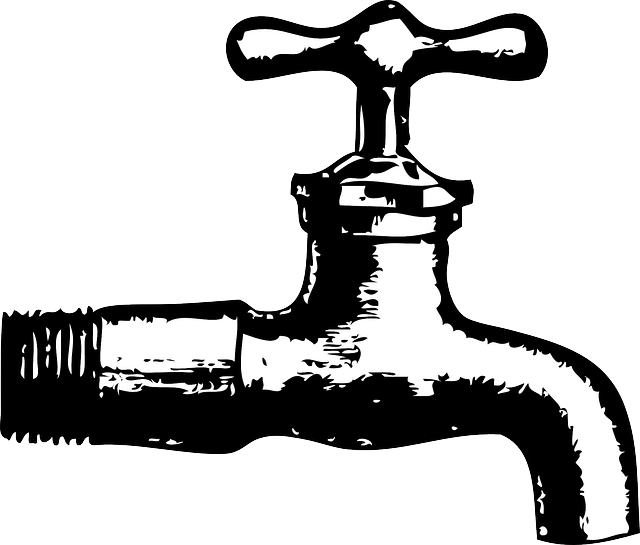Understanding common faucet repair issues, such as leaks caused by worn-out O-rings or washers, is key to saving money and water. Identifying your faucet's valve type helps in gathering the right tools for successful DIY repairs. Shutting off the water supply prevents leaks during disassembly. Homeowners can replace parts like O-rings, cartridges, and valves themselves, fixing issues like low flow and leaks. Regular cleaning, maintenance, and prompt replacement of worn-out parts prevent future problems.
Tired of leaky faucets? This comprehensive guide dives into the world of faucet repair, equipping you with the knowledge to tackle common issues. From identifying valve types to gathering essential tools, we break down the process step-by-step. Learn how to fix a leaking faucet, troubleshoot sticky valves, and replace old or damaged parts. Additionally, discover preventive maintenance tips to avoid future repairs. Master these skills and save money while keeping your fixtures in top shape with expert faucet repair advice.
Understanding Common Faucet Valve Issues

When it comes to faucet repair, understanding common issues is half the battle won. Leaks, for instance, are often caused by worn-out O-rings or washers inside the valve. These simple parts can be easily replaced, stopping water wastage and saving you from costly bills. Another frequent problem is a faucet that won’t stay in place—this usually indicates an issue with the cartridge or the valve seat. Cartridges can accumulate mineral deposits over time, affecting their functionality, so regular cleaning or replacement might be necessary.
Valve stems and discs may also need attention if your faucet is leaking from the spout or showing signs of excessive water pressure. These parts ensure a smooth flow regulation, and damage or misalignment can lead to leaks. Identifying these issues early on can prevent further complications and make faucet repair a straightforward DIY task for any homeowner.
Identifying the Different Types of Faucet Valves

When it comes to faucet repair, understanding the different types of valves is crucial. There are primarily two main categories: disk and cartridge valves. Disk valves are known for their durability and simplicity; they operate with a single disc that controls water flow. Cartridge valves, on the other hand, offer more flexibility in terms of temperature control and are often found in modern faucets. Within these categories, there can be variations based on brand and model, each with unique features designed to enhance functionality or aesthetics.
Identifying the specific type of valve in your faucet is the first step in any repair process. Disk valves, for instance, usually require replacing the disc and seat, while cartridge valves may necessitate swapping out the entire cartridge assembly. Knowing these nuances enables you to gather the right tools and parts, making the repair job more efficient and effective, ultimately saving time and money on faucet repair.
Gathering Necessary Tools for Repair

Before tackling any faucet repair, it’s crucial to gather the right tools. For most standard faucets, you’ll need a few basic items: adjustable wrenches (for gripping and turning), pliers (to grip and twist tight connections), and possibly a new washer or O-ring if your leak is due to these worn components. If your faucet has more intricate parts or is made from specific materials like ceramic or bronze, specialized tools may be required. Online resources can provide detailed lists tailored to different faucet types, making it easier for DIY enthusiasts to prepare.
Once armed with the necessary tools, you’ll be better equipped to navigate the repair process. The first step typically involves shutting off the water supply to prevent leaks during the repair. This is usually done by locating and turning off the shut-off valves under the sink or in the basement. With the water turned off, you can safely proceed with disassembling and inspecting the faucet components, leading to an effective and efficient faucet repair.
Step-by-Step Guide to Fixing a Leaking Faucet Valve

Leaky faucet valves can be a common household issue, but fixing them is often straightforward and can save you money on your water bills. Here’s a simple step-by-step guide to repairing a leaking faucet valve.
1. Shut off the Water Supply: Before starting any repairs, it’s crucial to shut off the water supply to prevent leaks during the process. Locate the shut-off valves under the sink and turn them clockwise to stop the water flow. For older homes with a separate stop valve for each faucet, turn both valves tightly to ensure no water remains in the pipes.
2. Disassemble the Faucet Handle: Remove the faucet handle by unscrewing it counterclockwise from the valve stem. Once loose, carefully lift the handle off. This will expose the valve mechanism. Next, use a wrench or pliers to loosen and remove the screw holding the valve stem in place. Gently pull out the old O-ring or washer from the valve stem. Clean the area with a cloth or wire brush to remove any debris or rust. Insert a new O-ring or washer, ensuring it fits tightly around the stem. Reassemble the faucet handle by screwing it back onto the valve stem clockwise until snug. Finally, turn on the water supply valves and check for any leaks. If the leak persists, consult a professional plumber for further assistance.
Troubleshooting Tight or Sticking Faucet Valves

When dealing with a tight or sticking faucet valve during a repair, there are several common causes to consider. Initially, inspect for mineral buildup or hard water deposits that can hinder smooth movement. Over time, these residues can accumulate and solidify, leading to restriction in the valve’s operation. Addressing this issue often involves soaking the affected parts in white vinegar or specialized cleaning solutions to soften and remove any calcium or magnesium buildup.
After thorough cleaning, apply a suitable lubricant to the valve stem and seat to ensure smooth opening and closing. This simple step can solve the problem of tight valves. It’s recommended to use silicone-based lubricants designed for plumbing applications, as they provide long-lasting protection without attracting water-borne bacteria. If the issue persists, consider replacing old or damaged parts, such as worn-out O-rings or valves that have seen better days, with new ones from a hardware store, ensuring a seamless and efficient faucet repair process.
Replacing an Old or Damaged Faucet Valve

When it comes to faucet repair, one of the most common issues is a worn-out or damaged faucet valve. Over time, these valves can become old and inefficient, leading to leaks and reduced water flow. If your faucet is showing signs of age, such as intermittent flow, low water pressure, or constant dripping, it might be time for a replacement.
Replacing an old faucet valve is a relatively straightforward process that many homeowners can handle themselves with the right tools and some basic knowledge. The first step is to turn off the water supply to the faucet, usually located under the sink or in the basement. Once the water is cut off, you can safely remove the old valve by unscrewing it from the faucet stem. It’s important to have a replacement valve ready, ensuring compatibility with your faucet model for a seamless installation.
Tips for Preventive Maintenance and Future Repairs

Regular maintenance is key to preventing future faucet repair issues. Start by checking your faucets periodically for any signs of damage or leaks. A simple inspection can catch minor problems early on, saving you time and money. Replace worn-out parts like O-rings and cartridges as soon as you notice a change in water pressure or a persistent leak.
To further ensure longevity, keep an eye on the faucet’s finish. Protect it from mineral buildup and corrosion by regularly cleaning and wiping down the surface. Use mild soap and warm water to clean hard-to-reach areas around the base. Additionally, lubricating the faucet’s moving parts with a light oil or silicone grease can help maintain its smooth operation and prevent stiffening over time, making future repairs easier.
